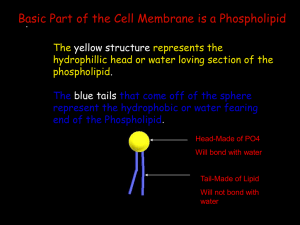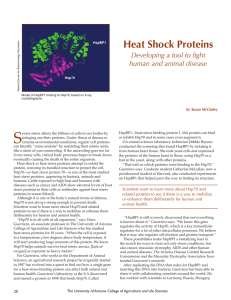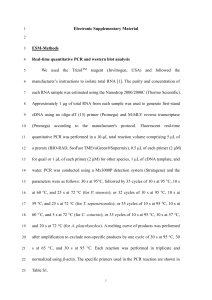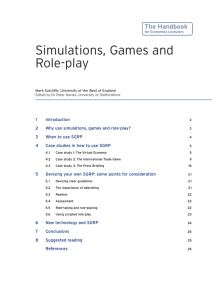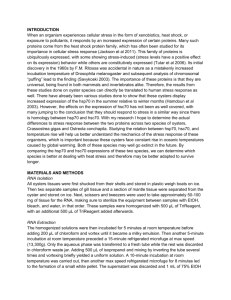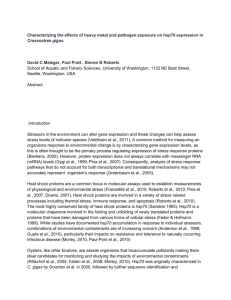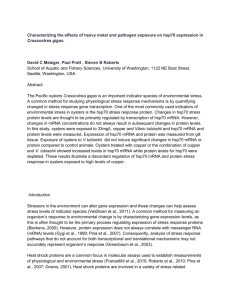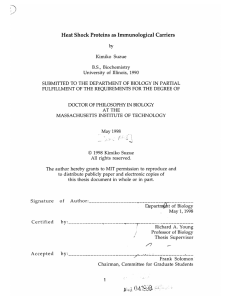Structural Studies of Sgt2, a Component of the GET Pathway that
advertisement
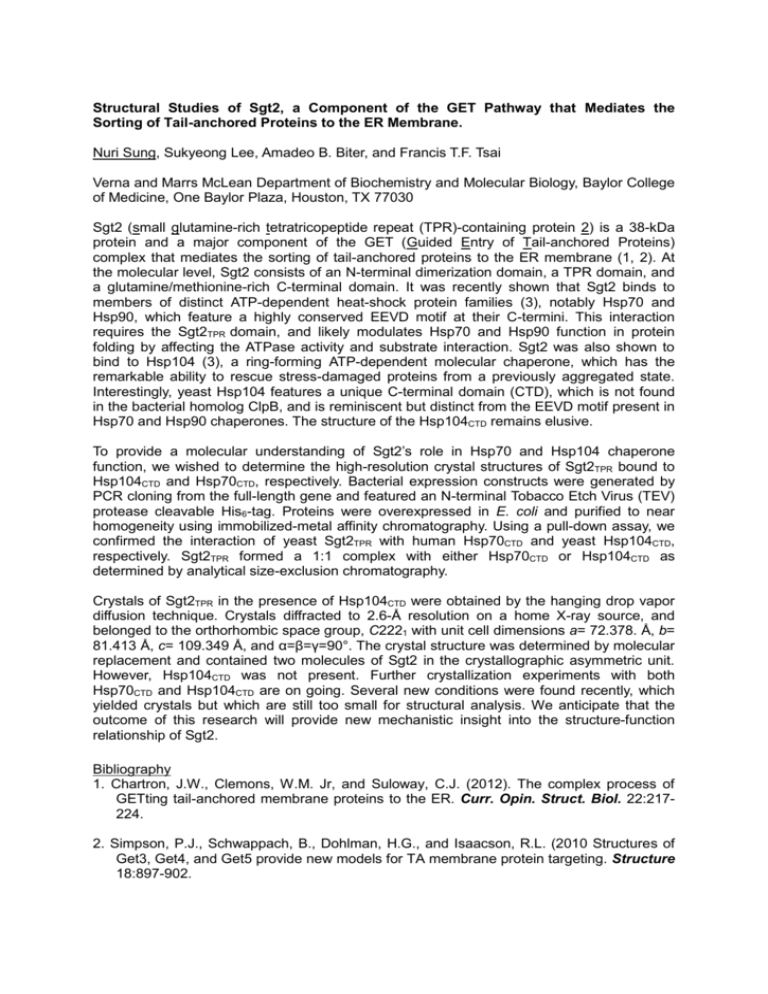
Structural Studies of Sgt2, a Component of the GET Pathway that Mediates the Sorting of Tail-anchored Proteins to the ER Membrane. Nuri Sung, Sukyeong Lee, Amadeo B. Biter, and Francis T.F. Tsai Verna and Marrs McLean Department of Biochemistry and Molecular Biology, Baylor College of Medicine, One Baylor Plaza, Houston, TX 77030 Sgt2 (small glutamine-rich tetratricopeptide repeat (TPR)-containing protein 2) is a 38-kDa protein and a major component of the GET (Guided Entry of Tail-anchored Proteins) complex that mediates the sorting of tail-anchored proteins to the ER membrane (1, 2). At the molecular level, Sgt2 consists of an N-terminal dimerization domain, a TPR domain, and a glutamine/methionine-rich C-terminal domain. It was recently shown that Sgt2 binds to members of distinct ATP-dependent heat-shock protein families (3), notably Hsp70 and Hsp90, which feature a highly conserved EEVD motif at their C-termini. This interaction requires the Sgt2TPR domain, and likely modulates Hsp70 and Hsp90 function in protein folding by affecting the ATPase activity and substrate interaction. Sgt2 was also shown to bind to Hsp104 (3), a ring-forming ATP-dependent molecular chaperone, which has the remarkable ability to rescue stress-damaged proteins from a previously aggregated state. Interestingly, yeast Hsp104 features a unique C-terminal domain (CTD), which is not found in the bacterial homolog ClpB, and is reminiscent but distinct from the EEVD motif present in Hsp70 and Hsp90 chaperones. The structure of the Hsp104CTD remains elusive. To provide a molecular understanding of Sgt2’s role in Hsp70 and Hsp104 chaperone function, we wished to determine the high-resolution crystal structures of Sgt2TPR bound to Hsp104CTD and Hsp70CTD, respectively. Bacterial expression constructs were generated by PCR cloning from the full-length gene and featured an N-terminal Tobacco Etch Virus (TEV) protease cleavable His6-tag. Proteins were overexpressed in E. coli and purified to near homogeneity using immobilized-metal affinity chromatography. Using a pull-down assay, we confirmed the interaction of yeast Sgt2TPR with human Hsp70CTD and yeast Hsp104CTD, respectively. Sgt2TPR formed a 1:1 complex with either Hsp70CTD or Hsp104CTD as determined by analytical size-exclusion chromatography. Crystals of Sgt2TPR in the presence of Hsp104CTD were obtained by the hanging drop vapor diffusion technique. Crystals diffracted to 2.6-Å resolution on a home X-ray source, and belonged to the orthorhombic space group, C2221 with unit cell dimensions a= 72.378. Å, b= 81.413 Å, c= 109.349 Å, and α=β=γ=90°. The crystal structure was determined by molecular replacement and contained two molecules of Sgt2 in the crystallographic asymmetric unit. However, Hsp104CTD was not present. Further crystallization experiments with both Hsp70CTD and Hsp104CTD are on going. Several new conditions were found recently, which yielded crystals but which are still too small for structural analysis. We anticipate that the outcome of this research will provide new mechanistic insight into the structure-function relationship of Sgt2. Bibliography 1. Chartron, J.W., Clemons, W.M. Jr, and Suloway, C.J. (2012). The complex process of GETting tail-anchored membrane proteins to the ER. Curr. Opin. Struct. Biol. 22:217224. 2. Simpson, P.J., Schwappach, B., Dohlman, H.G., and Isaacson, R.L. (2010 Structures of Get3, Get4, and Get5 provide new models for TA membrane protein targeting. Structure 18:897-902. 3. Wang, F., Brown, E.C., Mak, G., Zhuang, J. and Denic, V. (2010). A chaperone cascade sorts proteins for post-translational membrane insertion into the endoplasmic reticulum. Mol. Cell 40:159-171.









